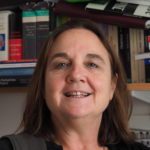Link to Pubmed [PMID] – 23945259
Med Sci Law 2013 Oct;53(4):227-34
PURPOSE: To investigate the interest of post-mortem ultrasonography in the diagnosis of pathological background, and manner and cause of death.
METHODS: Post-mortem ultrasonography exams were carried out on 38 fresh human adult cadavers referred to the Department of Forensic Medicine and Pathology (Garches, France). Data obtained from ultrasonography were independently compared with further forensic autopsy findings.
RESULTS: Two important limitations relative to ultrasound utilization appeared: hyper-echoic abdominal and thoracic walls, with gas distension of the whole digestive tube and subcutaneous tissues (due to precocious putrefactive gas releasing); and difficulty in accessing lateral and posterior structures (i.e. liver, spleen, kidneys, lung bases, aorta) due to rigor mortis and evident non-compliance of the subject. Post-mortem diagnoses (moderate ascites, gallbladder stones, bladder globe, chronic kidney disease, cirrhosis, thyroid gland cysts and hypertrophy, intrauterine device), were strongly limited. False negative diagnoses comprised fatty liver, pleural effusion, thoracic aortic dissection, and focal organ and/or soft tissues lesions (for example, wounds or infarcts).
CONCLUSION: According to the results, post-mortem ultrasonography seems to have a very limited role for forensic purposes. Other post-mortem utilizations are cited, proposed, and discussed.

